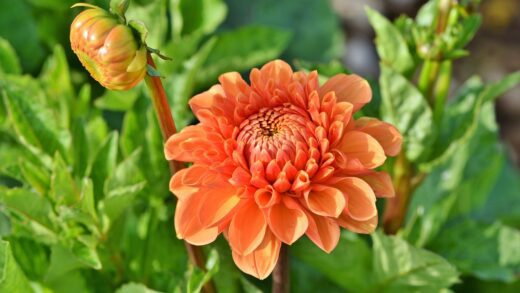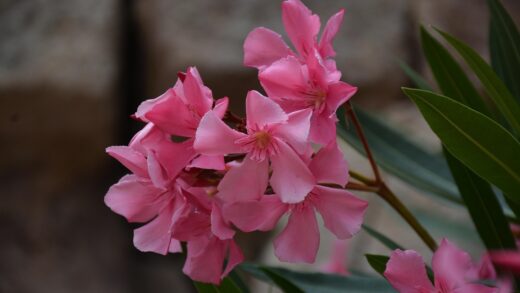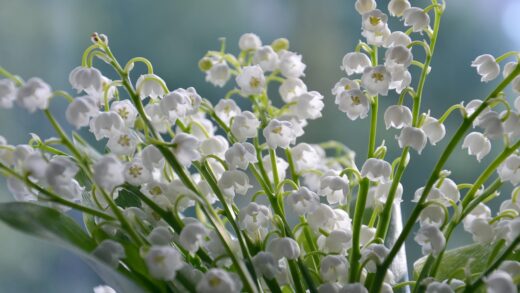Understanding the water requirements of lantana is fundamental to cultivating a healthy, vibrant plant that thrives throughout the growing season. Lantana has earned a well-deserved reputation for being remarkably drought-tolerant, but this characteristic primarily applies once the plant is fully established. During its initial stages of growth after being planted in the garden, it requires a more attentive watering schedule to develop the deep and extensive root system that will sustain it through future dry spells. This initial investment in proper irrigation sets the foundation for a low-maintenance plant that can withstand the peak heat and sporadic rainfall of summer with incredible resilience. Getting the watering right from the start is the key to unlocking its tough, enduring nature.
The concept of “drought-tolerant” does not mean “no water,” but rather that the plant can survive and even thrive on less water than many other garden annuals and perennials. For an established lantana, the goal is to water deeply but infrequently. This method encourages the roots to grow further down into the soil in search of moisture, which makes the plant stronger and less dependent on surface water from frequent, shallow irrigation. Overwatering is a far greater threat to lantana than underwatering, as it can quickly lead to fatal root rot and other fungal diseases that flourish in consistently damp conditions.
The specific watering needs of a lantana plant can be influenced by several environmental factors, including climate, soil type, and whether it is planted in the ground or in a container. A lantana growing in a sandy, fast-draining soil in a hot, arid climate will naturally require more frequent watering than one planted in a richer soil in a more temperate region with regular rainfall. Similarly, container-grown plants will always demand more water than their in-ground counterparts because the limited volume of soil heats up and dries out much more quickly.
Observing your plant is one of the best ways to gauge its need for water. A healthy, well-hydrated lantana will have firm leaves and stems. When the plant begins to experience water stress, its leaves may start to look slightly wilted or droopy. This is a clear signal that it is time to provide a thorough soaking. By learning to read these subtle cues, you can develop an intuitive watering routine that is perfectly tailored to your plant’s needs and the specific conditions of your garden, ensuring it remains a stunning performer all season long.
Watering newly planted lantana
The period immediately following planting is the most critical time for watering your lantana. During this establishment phase, which typically lasts for the first few weeks to a month, the plant’s primary focus is on developing a robust root system that can support its future growth. To facilitate this, the soil should be kept consistently moist but never waterlogged. This means you will need to check the plant more frequently than you will later in the season. A good rule of thumb is to water thoroughly whenever the top inch of soil feels dry to the touch.
More articles on this topic
When you do water, it is important to do so deeply to encourage the roots to grow downwards rather than staying near the surface. Apply water slowly at the base of the plant, allowing it to soak in rather than run off. Continue watering until the entire root zone is saturated. For a new plant, this means moistening the soil to a depth of at least 15-20 centimeters. This deep watering method provides a reservoir of moisture that the plant can draw upon as the surface soil begins to dry out.
The frequency of watering during this establishment period will depend heavily on your local weather conditions. During cool, cloudy weather, you may only need to water once or twice a week. However, during a hot, sunny, and windy spell, you might need to water every other day to prevent the young plant from experiencing stress. The key is not to adhere to a rigid schedule, but to monitor the soil moisture and the plant’s appearance, adjusting your watering practices accordingly.
Signs of successful establishment include the appearance of new leaves and stems, indicating that the root system is growing and functioning properly. Once you observe this new growth, you can gradually begin to reduce the frequency of your watering. This process weans the plant off of consistent moisture and encourages it to develop the drought-tolerant characteristics for which it is known. This transition is essential for cultivating a truly low-maintenance and resilient plant.
Irrigation for established plants in garden beds
Once a lantana plant is fully established in a garden bed, its watering needs decrease significantly. An established plant is one that has been in the ground for at least one full growing season and has developed a strong, deep root system. At this stage, it can effectively access moisture from deeper within the soil profile, making it highly resilient to short-term dry periods. In many climates with regular summer rainfall, established lantanas may require very little to no supplemental irrigation at all.
More articles on this topic
The guiding principle for watering established lantana is to water deeply and infrequently. When you do water, perhaps during a prolonged drought, provide a thorough soaking that penetrates the soil deeply, moistening the entire root zone. This might mean leaving a soaker hose or a trickle from a regular hose at the base of the plant for an extended period. This practice reinforces deep root growth, making the plant even more self-sufficient and better able to withstand future periods of heat and drought.
Avoid the temptation to give the plant frequent, light sprinklings of water. This type of shallow watering encourages the development of a shallow root system, which makes the plant more vulnerable to drought stress and more dependent on constant irrigation. It is far better to wait until the plant shows the very first subtle signs of wilting and then provide a comprehensive, deep drink. For a large, established shrub in the peak of summer, this might mean watering deeply only once every week or two during the driest conditions.
The type of soil in your garden will also play a role in your watering strategy. Sandy soils drain very quickly and will require more frequent watering than heavy clay soils, which retain moisture for much longer. However, the principle of deep and infrequent watering remains the same regardless of soil type. The goal is always to allow the soil to dry out to a considerable depth between waterings, which helps to prevent root diseases and promotes a healthier, more resilient plant.
The specific needs of container-grown lantana
Lantana grown in containers, pots, and hanging baskets has vastly different watering needs compared to plants in the ground. The limited volume of soil in a container cannot hold as much moisture and dries out much more quickly due to exposure to sun and wind on all sides. Consequently, potted lantanas require much more frequent watering to prevent them from drying out completely, especially during the hot summer months. It is not uncommon to have to water container-grown lantana daily in the peak of summer.
The best way to determine if a potted lantana needs water is to check the soil moisture every day. Simply insert your finger about an inch or two into the potting mix. If it feels dry at that depth, it is time to water. Do not rely on a fixed schedule, as the plant’s water usage will fluctuate based on the temperature, humidity, and amount of sunlight it receives. On very hot, windy days, you may even need to check the soil twice a day.
When you water a container plant, it is imperative to do so thoroughly until water begins to run freely from the drainage holes at the bottom of the pot. This ensures that the entire root ball has been saturated and also helps to flush out any accumulated salts from fertilizers that can build up in the soil over time. After the initial thorough watering, allow the pot to drain completely and do not let it sit in a saucer full of water, as this can lead to waterlogged soil and root rot.
Choosing the right container can also help manage watering needs. Larger pots hold more soil and therefore more moisture, requiring less frequent watering than smaller pots. Materials like terracotta are porous and will dry out faster than plastic or glazed ceramic containers. Regardless of the container type, ensuring it has adequate drainage holes is non-negotiable for the health of your lantana. Without proper drainage, even the most careful watering practices can lead to fatal root problems.
Recognizing signs of overwatering and underwatering
Learning to identify the visual cues of both overwatering and underwatering is a crucial skill for any gardener. Interestingly, the symptoms can sometimes appear quite similar, primarily involving wilting and yellowing leaves, which can lead to confusion. An underwatered lantana will have dry, crispy leaves, and the entire plant will appear droopy and limp. The soil in the pot or around the plant will be visibly dry and may have even pulled away from the sides of the container. The good news is that an underwatered lantana will usually bounce back quickly after receiving a thorough drink.
Conversely, an overwatered lantana will also wilt, but its leaves will often feel soft and limp rather than crispy. You may also notice yellowing leaves, particularly the lower ones, and a general lack of vigor or stunted growth. The most definitive sign of overwatering is the condition of the soil; if the plant is wilting while the soil is still damp or soggy, you are almost certainly providing too much water. Chronic overwatering suffocates the roots, preventing them from taking up water and nutrients, which is why the plant wilts despite being in wet soil.
Other signs of excessive moisture include the development of edema, which appears as small, blister-like bumps on the undersides of the leaves, or the presence of fungus gnats hovering around the soil surface. In advanced cases of overwatering, you may notice a foul, rotting smell coming from the soil, which indicates that root rot has set in. At this stage, it can be very difficult to save the plant.
The key to proper diagnosis is to always check the soil before you water. Do not water simply because the plant looks wilted; first, assess the soil moisture with your finger. This simple step can prevent the common and often fatal mistake of giving more water to an already overwatered plant. By correlating the plant’s appearance with the soil conditions, you can confidently determine whether it needs a drink or needs to be left alone to dry out.
📷 Flickr / Szerző: Mauricio Mercadante / Licence: CC BY-NC-SA 2.0


















